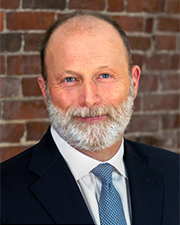Harnden joins The Dunham Group as partner and broker

Portland, ME Jim Harnden has joins The Dunham Group as broker and partner. Harnden comes to the Dunham team having over 35 years of experience in Maine’s commercial real estate market. Harnden has been president of Harnden Commercial Brokers. Harndens’s focus and expertise is tenant representation, having worked with some of the leading companies in our market – including large national, regional and local companies. Harnden’s proficiency includes working with investors to expand and manage their real estate portfolios.
“Jim embodies all the qualities that we are looking for in a broker; integrity, intelligence, a tireless work ethic and a commitment to building relationships and community,” said Justin Lamontagne, The Dunham Group’s managing partner and designated broker. “His breadth of industry knowledge, combined with a remarkable rolodex of local, regional and national clients make Jim a perfect addition to our firm”.
Harnden will be joining the office and investment team at the Dunham Group. Harnden and fellow Dunham Group broker Sam LeGeyt will be working together, a partnership that started earlier in LeGeyt’s career at Harnden Commercial Brokers. This partnership will allow both to serve their clients now and into the future.
An active member in the Portland community, Harnden is a member of MEREDA, MCAR, he is a past president of the Greater Portland Regional Chamber of Commerce, and past president of the Portland Downtown District.
Harnden lives in Yarmouth with his wife, Nicola Manganello and he has two grown daughters: Katie 33 and Maeve 23. He enjoys golf, skiing, and exercising.
PROCON and Hitchiner break ground on 57,000 s/f shared services operations facility








